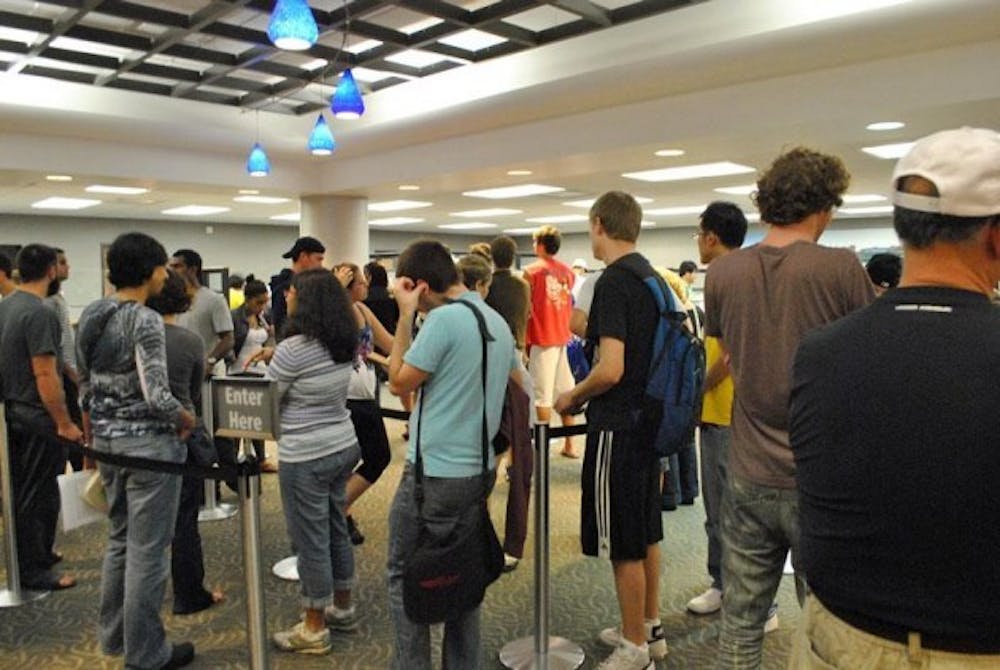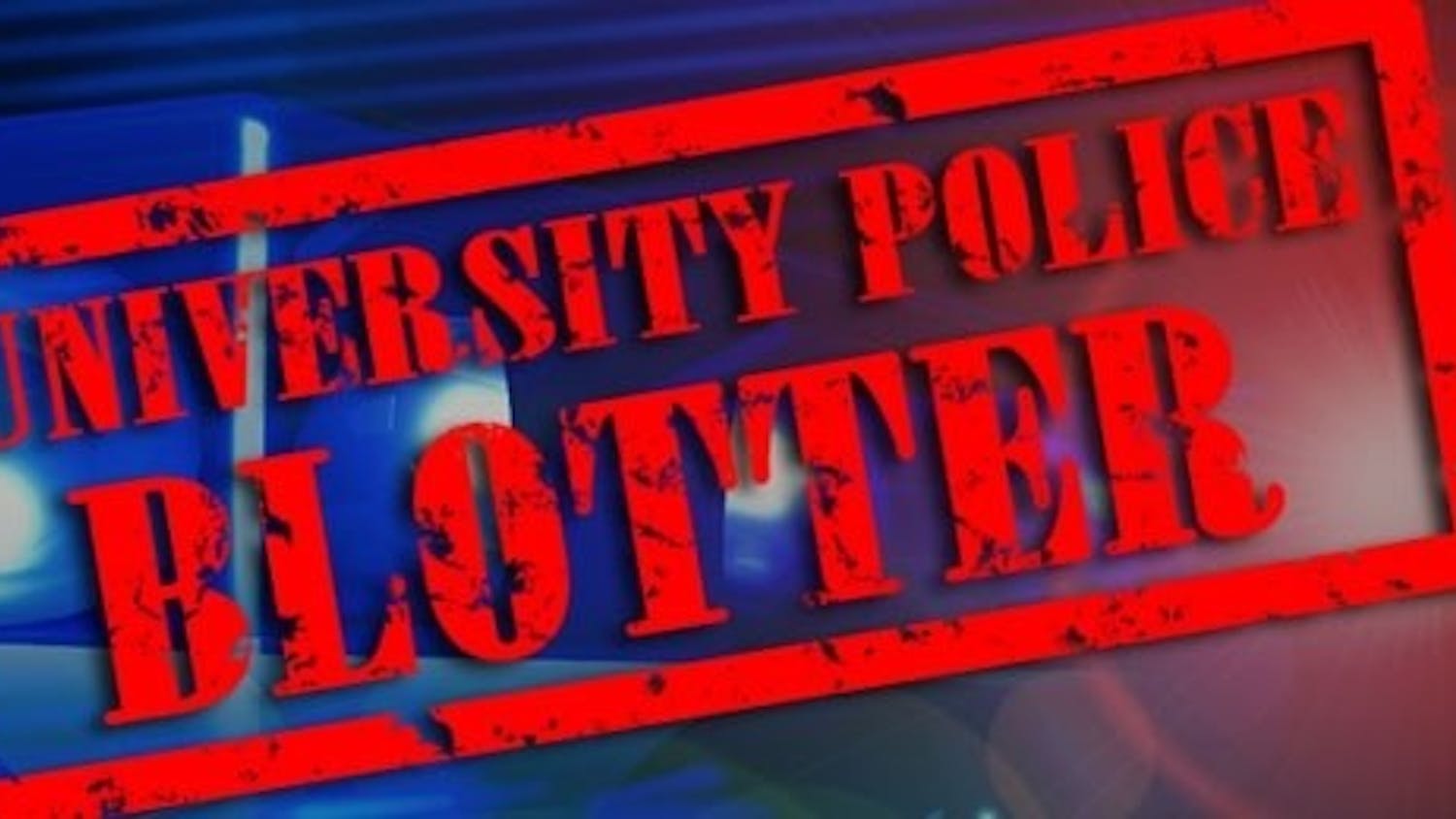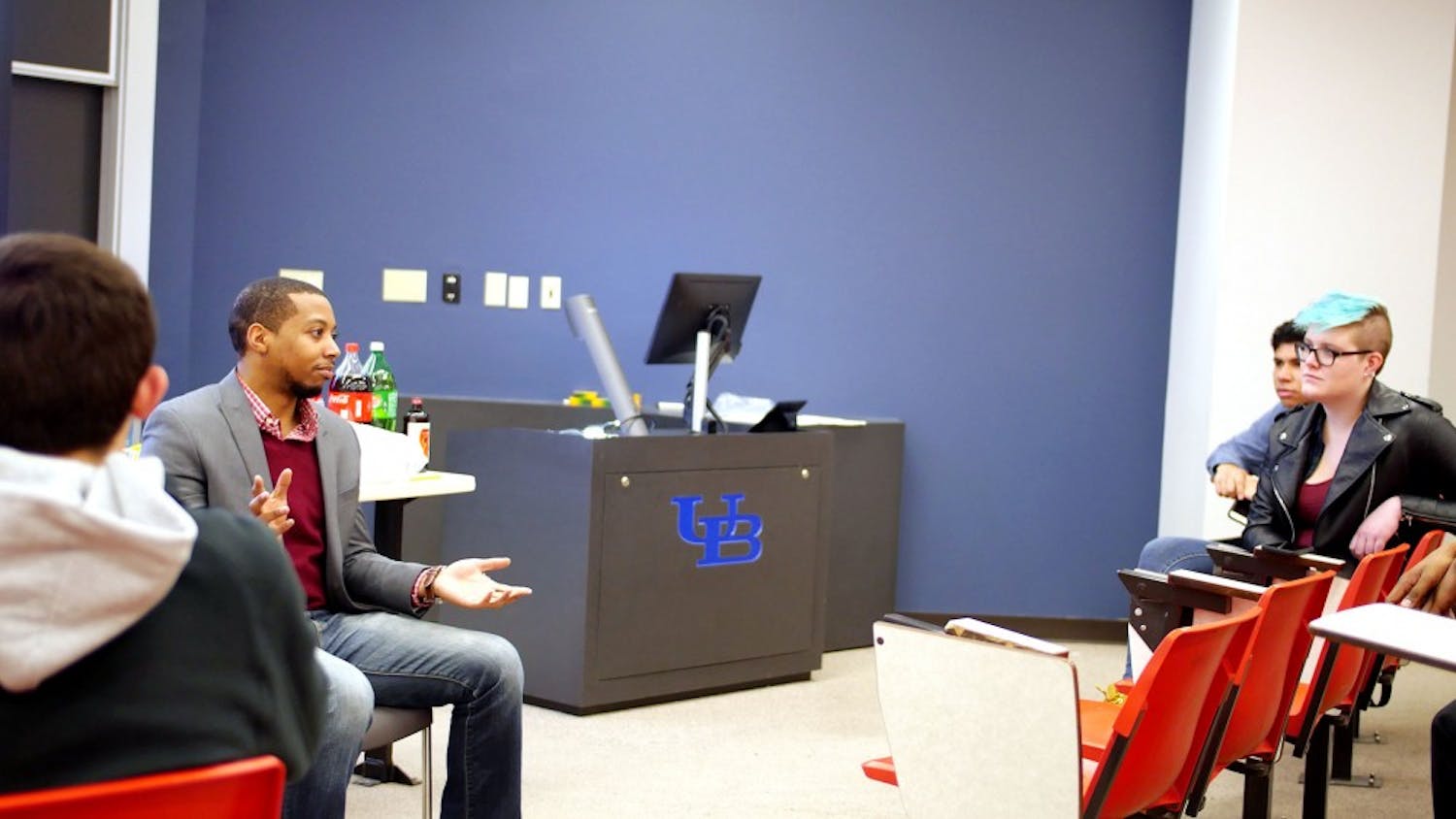Textbooks, rent, food, and transportation are expensive.
So it makes sense that most students return from summer vacation with finances already at the forefront of their mind, but this fall students were hit with a mind-boggling financial aid bombshell.
Financial aid disbursement – including loans – is now being distributed almost three full weeks later than in years past, and the add/drop period has been reduced from two weeks to one.
A total of 21 staff members in the financial aid department – 10 advisors and 11 professional staff members – are responsible for helping roughly 29,000 students figure out their financial aid dilemmas. The Student Response Center (SRC) also offers support but it has been extra busy this semester.
During the week before school started, the SRC recorded its highest call volume in a single day in its history with 10,000+ calls. The most calls recorded prior to that day was about 5,000. It was basically impossible for anybody to get through to get help with financial aid questions.
The changes to the disbursement schedule have been met with anger by many students, according to Jennifer Pollard, interim director of financial aid.
One of the many issues that have faced the financial aid office in the past has been students that have borrowed thousands of dollars in loans and failed to finish the semester. These students end up owing UB for these loans and with the changes it will be more difficult for students who have figured out the system to take advantage of financial aid.
"We had students who got refunds and then dropped out of school and then owe money," Pollard said. "Then they would end up in collections and with the Attorney General…We can't do that. It's not the way it should be run. We shouldn't be creating more problems for students with loan debt. That's the other problem and piece to this: these are loans. So we don't want to disperse money to students who aren't eligible for it and then they have debt…It's not a good practice. We want to make sure we're working with the students on this."
Pollard has only been in her position since May and was not aware of any research or statistical data that may or may not have been done to show what percentage of UB students took advantage of the old financial aid system.
The biggest issue about the changes are not so much that they were made as much as the lack of notice given to students.
"I don't think we anticipated the reaction from students to be as much as it was," Pollard said. "We knew there would be a reaction because this definitely changes things for a lot of students…Could we have done more, of course – apparently with the response from students we could have done way more."
|
What UB did to inform students: · Whenever someone sends an email to SRC they get an auto reply that has the warning in it. · MyUB has need-to-knows. The add/drop and financial aid disbursement changes are in red right now. · The SRC voicemail message during non-business hours contained information regarding the changes. · All the SARFS offices revamped their websites over the summer and they contain more information than ever before. · Posted about the changes on Facebook. |
When UB rolled out the HUB at the end of last semester, nobody could have envisioned the polarizing affect the new software would have on the campuses. People either love it or hate it, and there isn't a lot of room in between those lines.
Everything is done on the new system: registering for classes, dropping classes, accepting financial aid awards, and viewing and paying bills. One of the main issues that students have faced is the new idea of "anticipated financial aid" in the aftermath of the changes, which shows a student's account balance as being unpaid until the census date.
The new model for financial aid disbursement revolves around the financial aid census date. It's the date when the student's enrollment freezes and a snapshot is taken. That day happens to be the day after the new one-week add/drop period ends.
Students are accustomed to getting their bills paid on time and refund checks delivered well before school starts. Many students are dealing with how they'll pay rent and how they'll buy food until the checks are dispersed on Sept. 9 at the earliest.
"Some of the emails I've gotten and some of the calls I've received have been some of the worst I've gotten in my career in financial aid and I've been doing this since 1995," Pollard said. "We've been blamed for making people homeless, losing childcare – I mean we've been blamed for everything…A lot of my staff is starting to take it personally. That they're personally responsible for people being evicted."
The financial aid office suggests students who need to pay bills immediately seek out part time jobs to help pay the bills
"Financial aid is there to pay your tuition, fees, books and help with any additional expenses you have, but I think a lot of students believe it's just there to help support their life style," Pollard said. "We hear a lot of times that students can't pay their rent, they can't eat, get their car or are getting collection calls, and they put a lot of pressure on our offices. But we're really here to supplement paying for their education…not responsible for paying their education."
The reasoning given for the add/drop cut was three-fold, according to Assistant Registrar Nigel Marriner. Student's wait too long to drop and add classes and struggle to catch up on material. The second concern is for course demand and availability, which has been solved by the change.
Finally, it was an attempt to fix the inconsistencies between the registration and billing policies. The reasoning given for the time of the add/drop change was all about timing.
"[This] comes from the faculty senate, they made this decision, they made it awhile ago, it's just now, because of the implementation of the new system we can bring it in," Marriner said. "It was enacted in May 2008 and this is the first time we are enacting it…It was just easier to bring this in with the new system at the same time."
While students may not like the new system there doesn't seem to be any change of heart with the higher ups at UB about rethinking the changes.
"At this point there is nothing that is going to change," Pollard said. "This is the way it is and this is the way it was planned for the past couple of years now. This is the way it's been communicated to students and we just hope that there is enough students who are ready for this and don't walk on campus and expect to have money to pay Sept. 1 rent, because they're not going to have it."
The Spectrum wants to know all about your experiences with all the changes this semester, good and bad. If you want to share your story call the newsroom at 716-645-8565.
Email: news@ubspectrum.com





